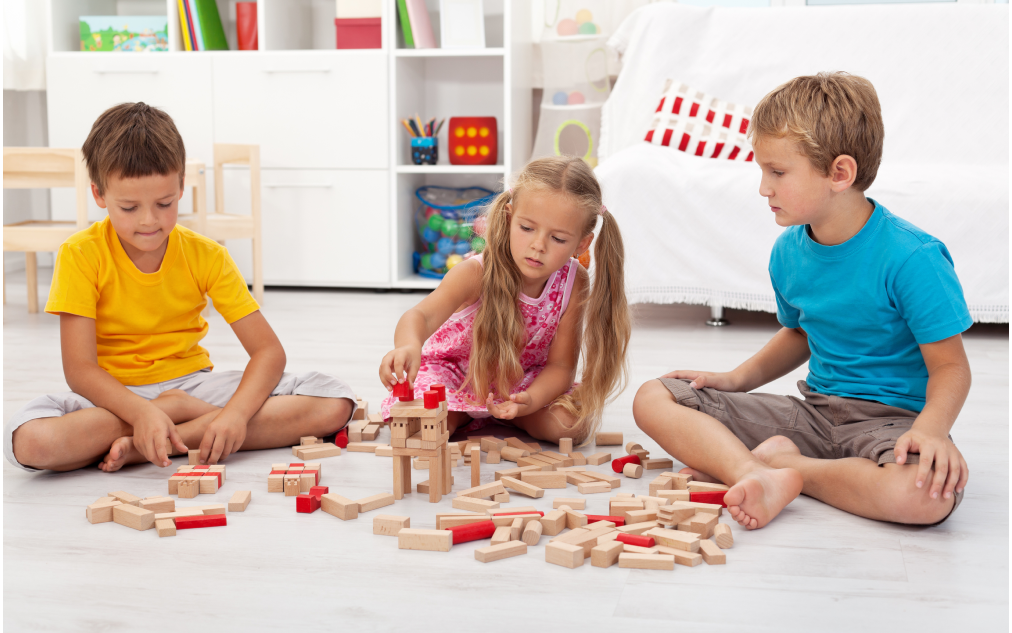Written by Alex Liau, learning & behaviour psychologist.
Trauma can leave children carrying invisible wounds. A frightening event like an accident, abuse, or sudden loss of a family member often overwhelms their ability to cope. Adults can talk about what they’ve been through, but for children, finding the words to explain trauma or their feelings about it is often impossible. That’s where trauma-informed play therapy steps in.
Through the familiar medium of play, therapists provide a safe environment in which children can externalise traumatic experiences, restore a sense of control, and initiate emotional healing.
When Play Becomes a Bridge
Children who have experienced trauma often live in survival mode. Their bodies may remain on high alert or, conversely, shut down completely in response to overwhelming stress or anxiety. Asking them to talk directly about what happened can heighten their distress and often leads to withdrawal or silence.
In a playroom, however, the experience can be very different. Through play, children can symbolically act out their fears and memories in ways that feel safe and non-threatening. Play therapy for traumatised children provides a bridge between inner experience and external expression, allowing them to process painful events at their own pace. Over time, this gentle approach helps them regain a sense of safety, control, and trust in the world around them.
Six-year-old Jacob recently survived a car accident and began therapy soon after. In the playroom, he avoided talking to the therapist and instead gravitated toward the sandpit. He lined up toy cars, staged a collision, and added tiny ambulances rushing to the scene. Week after week, he repeated the scene. At first, it seemed repetitive, but his therapist knew Jacob was gaining emotional distance. Through the repeated play, Jacob slowly turned fear into understanding, reshaping a painful experience into a story he could make sense of.
When working with children like Jacob, therapists can use two techniques: either non-directive or structured trauma-informed play therapy. But how do they decide which approach will have the best outcome? The decision is mainly dependent on the child’s readiness. During a non-directive therapy session, children are free to select art supplies, figurines, or toy vehicles, while the therapist observes recurring themes.
In Jacob’s case, he often replayed the crash: two cars colliding, figures falling, cries echoing from his own voice. Through trauma-informed play therapy, he expressed fear and helplessness without needing to speak. As the therapist gradually built trust with Jacob, he could progress to structured activities where Jacob participates in play that the therapist partly guides. He continues this process so he can tell a story about his fears and trauma. Later, Jacob created a comic strip depicting himself wiping tears from his eyes while his mother hugged him at home. This new narrative enabled Jacob to reframe the traumatic memory. Instead of feeling helpless, he could now envision comfort, safety, and resilience.
Healing Through the Senses
Trauma not only affects the mind; it also leaves an imprint on the body. Many children who have experienced trauma remain hypervigilant, jumpy, or, on the other side of the spectrum, numb. Through sensory and somatic play activities, therapists help restore balance in children. Using clay, calming jars filled with glitter, and finger painting provides soothing outlets for children whose bodies seem tense and anxious. As part of the structured and somatic play activity, Jacob’s therapist often instructed him to squeeze clay into tight balls during sessions. His therapist encouraged him to name the clay after feelings – “this is worry, this is anger” – before squashing them flat. Each act gave Jacob a physical sense of release.
For other children, building safe spaces brings comfort. A therapist may invite a child to create a blanket fort or “safe cave.” Inside, the child can control who enters, reclaiming a sense of safety often lost after trauma. Rhythmic activities such as drumming, rocking dolls, or bouncing on a therapy ball help soothe a child’s nervous system. These repetitive motions signal to the brain that the child is no longer in danger.
The Therapist’s Attunement
The success of trauma-informed child-centred play therapy depends not only on activities but on the therapist’s sensitivity. Healing requires patience, structure, and a sense of safety.
Therapists follow the child’s lead and adjust the pace carefully. They never push a child to share before the child is ready. Instead, they offer gentle prompts, such as emotion cards or a “feelings thermometer,” that help children gradually label their emotions.
For example, Liam struggled with anxiety after a house fire. His therapist introduced a colour-coded feelings chart: green for calm, yellow for nervous, red for scared. Liam began using the chart to note how he felt at each session. Over time, this simple tool helped him recognise and articulate emotions he had once bottled up.
From Victim to Survivor of Trauma
The ultimate goal of play therapy for traumatised children is not simply to revisit painful events but to reshape them. Children begin to see themselves not as helpless victims but as resilient survivors.
Jacob, who once replayed endless car crashes in the sand tray, eventually added rescue crews, survivors, and happy endings. Through trauma-informed play therapy, he rewrote his story. What began as chaos and fear transformed into themes of safety and empowerment. In the process, he discovered strength, self-awareness, and confidence that carried into his daily life.
Trauma robs a child of a sense of safety and control. Play therapy gives it back. By providing symbolic outlets, sensory experiences, and relational safety, therapists guide children through the difficult work of healing at their own pace.
The playroom is a sanctuary where Jacob can safely express his fears through toys and eventually overcome them. With the support of sensitive therapists and engaged caregivers, children learn that while trauma is part of their story, it does not define who they are. Through play, they find not only relief but also resilience and the belief that they are strong enough to face the world again.
If you’re passionate about supporting children’s emotional growth, consider enrolling in my free Diploma in Play Therapy course. This comprehensive course explores the theory and practice behind play therapy, equipping educators, mental health professionals, and aspiring therapists with the tools to help children heal and thrive through the power of play.









